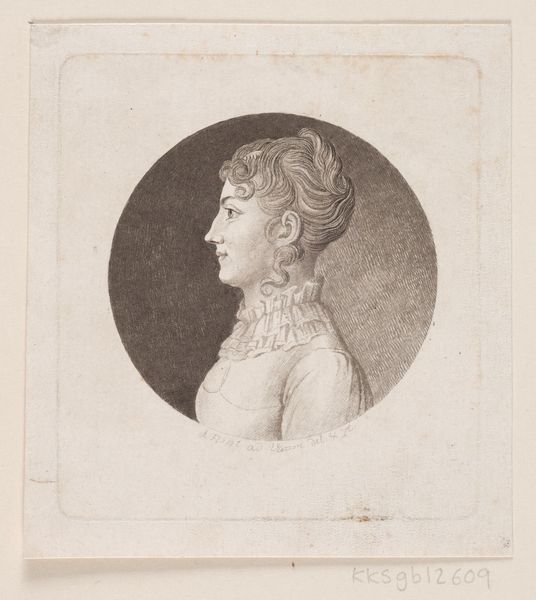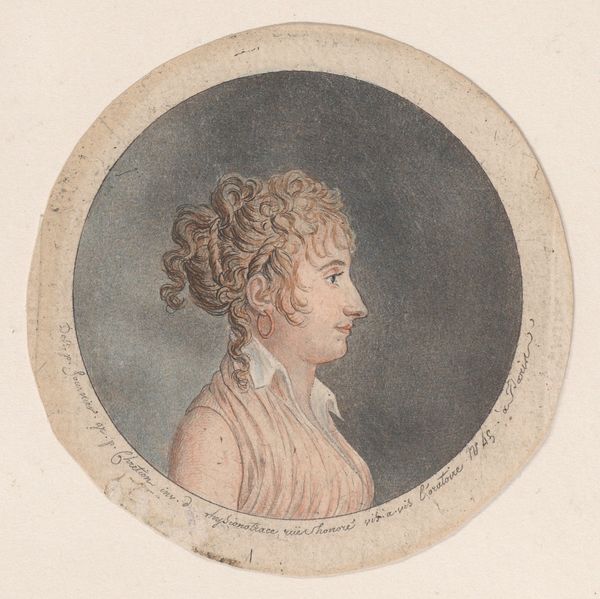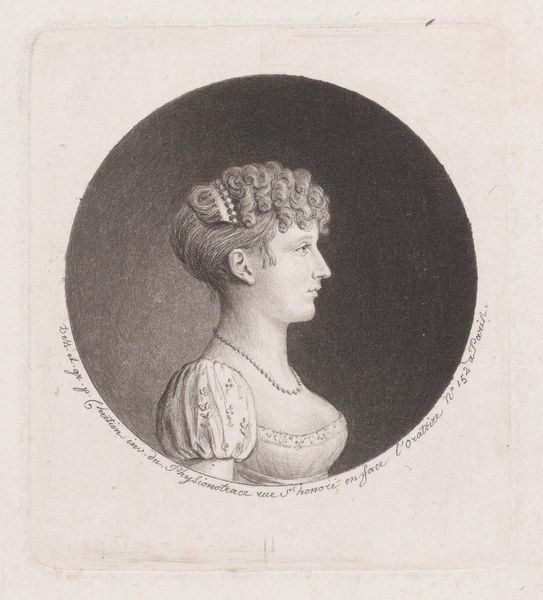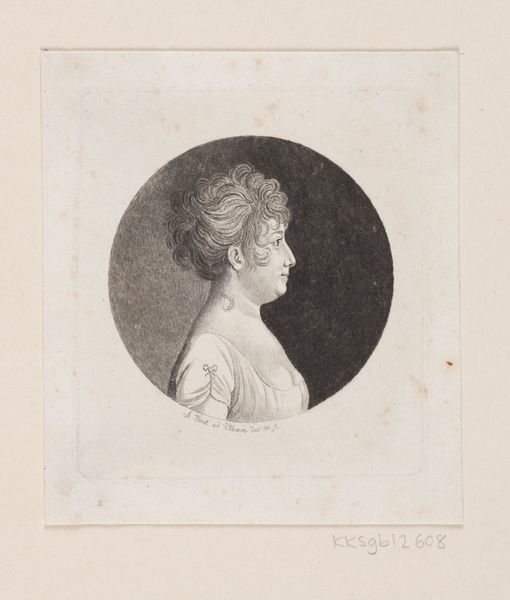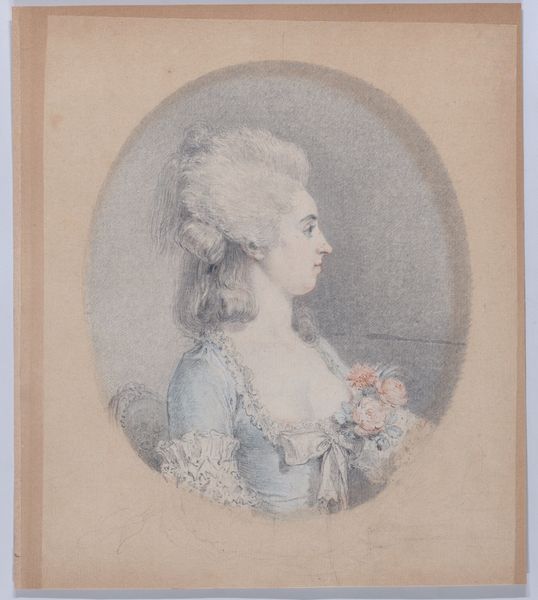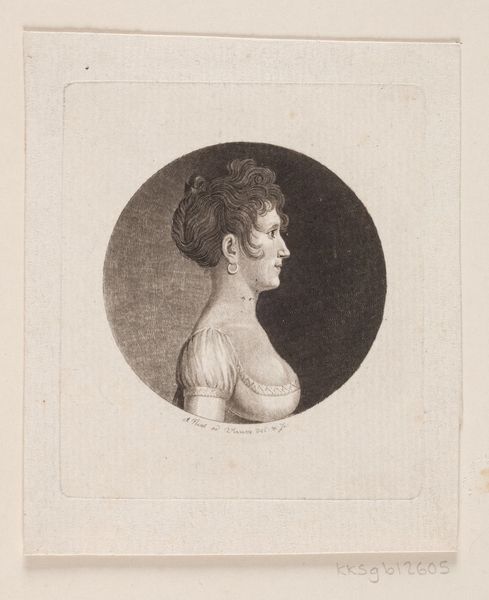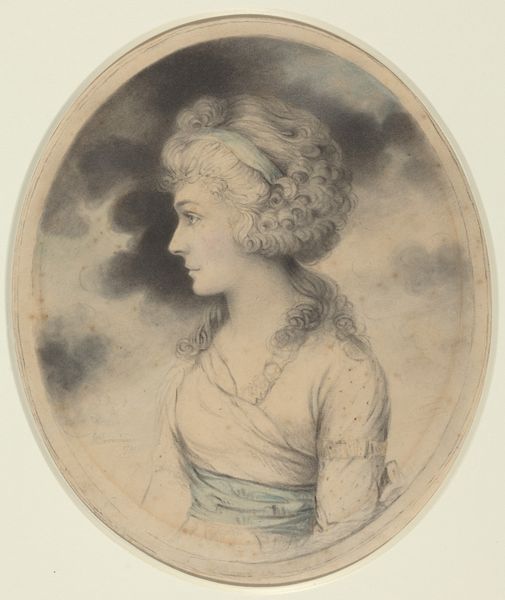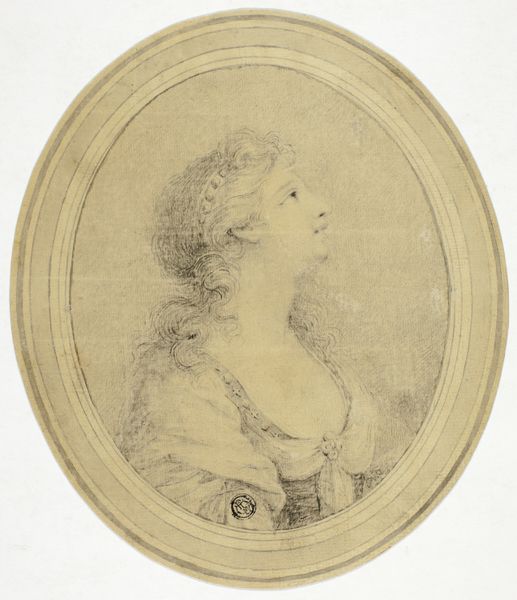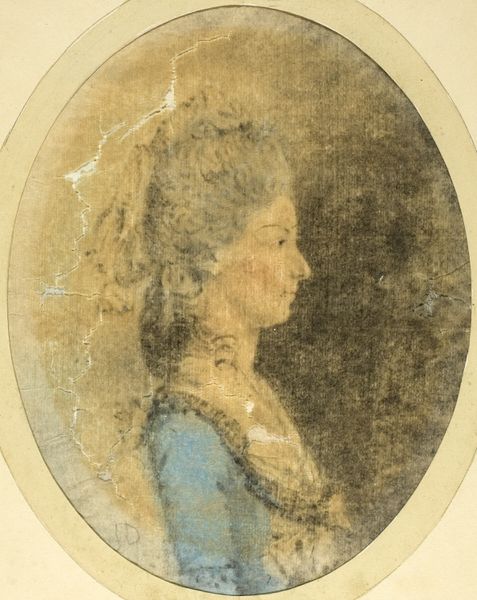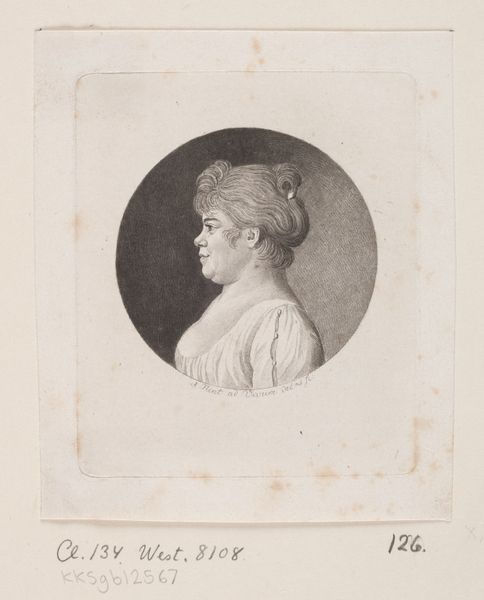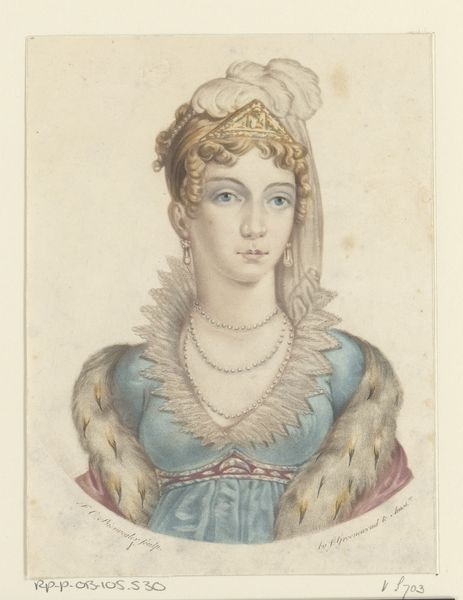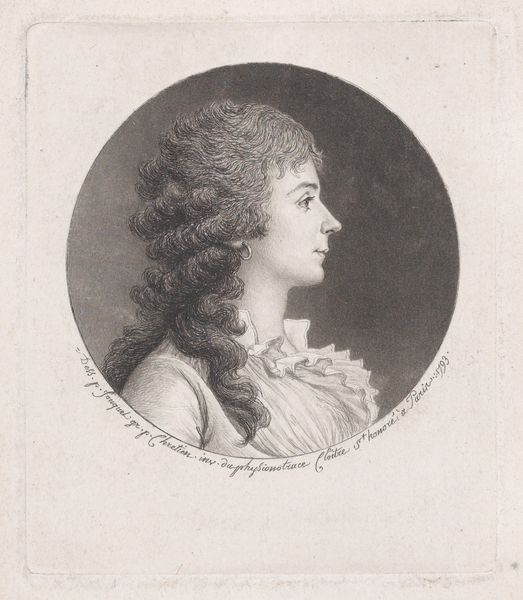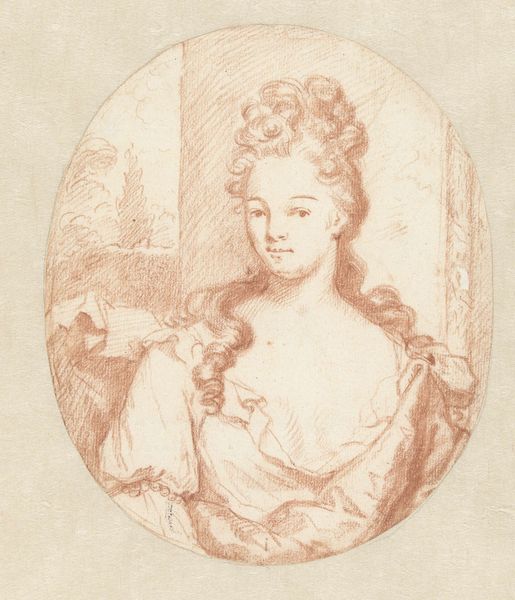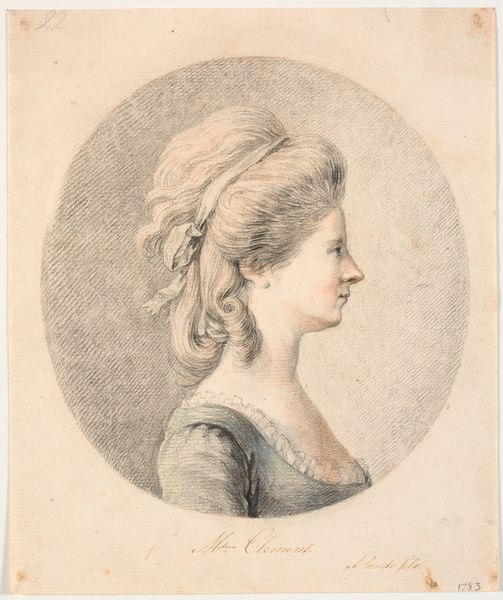
Portrait of an unknown lady, to left 1781 - 1811
0:00
0:00
drawing, coloured-pencil, print
#
portrait
#
drawing
#
coloured-pencil
#
neoclassicism
# print
#
coloured pencil
#
watercolor
Dimensions: Plate: 3 3/8 × 2 3/4 in. (8.6 × 7 cm) Sheet: 5 7/16 × 3 15/16 in. (13.8 × 10 cm)
Copyright: Public Domain
Curator: This is a portrait of an unknown lady, created by Gilles Louis Chrétien, likely between 1781 and 1811. The medium appears to be coloured pencil and possibly watercolor, and it exemplifies the Neoclassical style. Editor: I'm immediately struck by its delicate and almost ethereal quality. The pastel colors and the precision of the lines contribute to this sense of refined beauty. Curator: The oval format, characteristic of portrait miniatures of the era, further accentuates this intimate quality. Chrétien employs a profile view, popular in Neoclassical art, allowing for a focus on the idealized features and controlled emotion. Notice the precise rendering of her coiffure; a complex arrangement of curls held in place by a band, reflecting the fashions of the late 18th century. Editor: Indeed, the attention to detail in the hair is remarkable. However, the social context cannot be ignored. Portraits like these often served as markers of status and aspiration during the era, intended for public and private display as reminders of class identity and prestige. To have one's portrait done, particularly in color, signified a degree of affluence. Curator: Observe how the subtle modeling of light and shadow defines the planes of her face, rendering her features with remarkable clarity. The limited palette enhances the focus on form and line, creating a sense of elegant restraint. Chrétien's technical skill in handling coloured pencil and watercolor allows him to achieve a level of detail usually reserved for painting. Editor: The use of these softer, blended mediums in contrast to stark oil paintings creates a visual lexicon with different socio-cultural applications; as art moved into homes, studios, and galleries, different types of 'art' emerged. While it may have appealed to aristocratic sensibilities, it would also have served to democratize image making to broader groups that sought accessible artistic renderings. Curator: Absolutely. And considered formally, this artistic moment marks a visual turn towards personal sensibility away from overt symbolism. It prompts an investigation into individual perception, the artistry, and its relation to both private appreciation and, if we consider display, public validation. Editor: It underscores, for me, how art, whether formally or socially, always reflects something both intrinsic and beyond itself. Curator: A fitting final note to ponder.
Comments
No comments
Be the first to comment and join the conversation on the ultimate creative platform.
